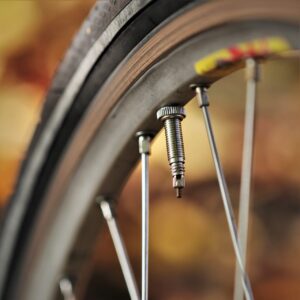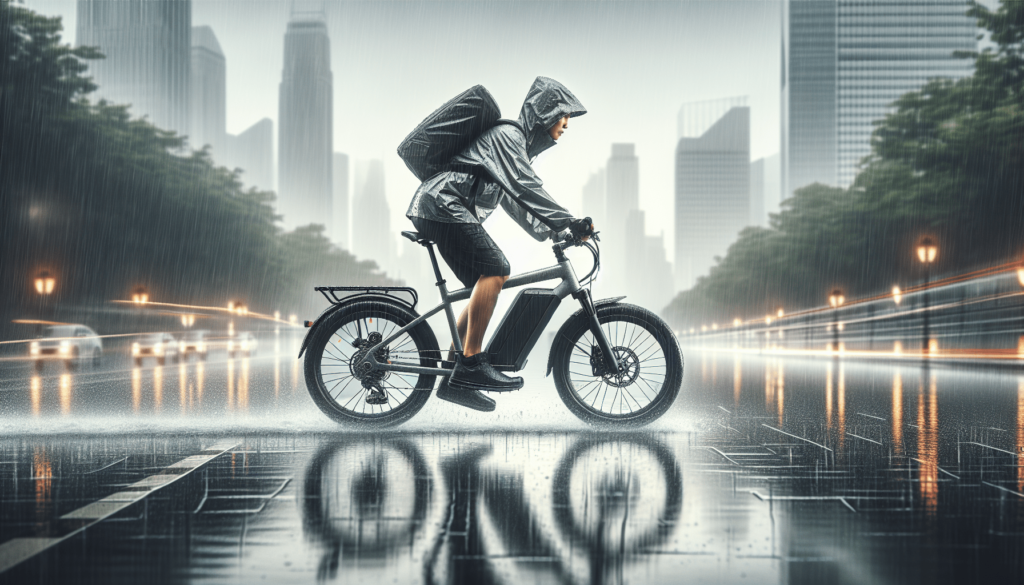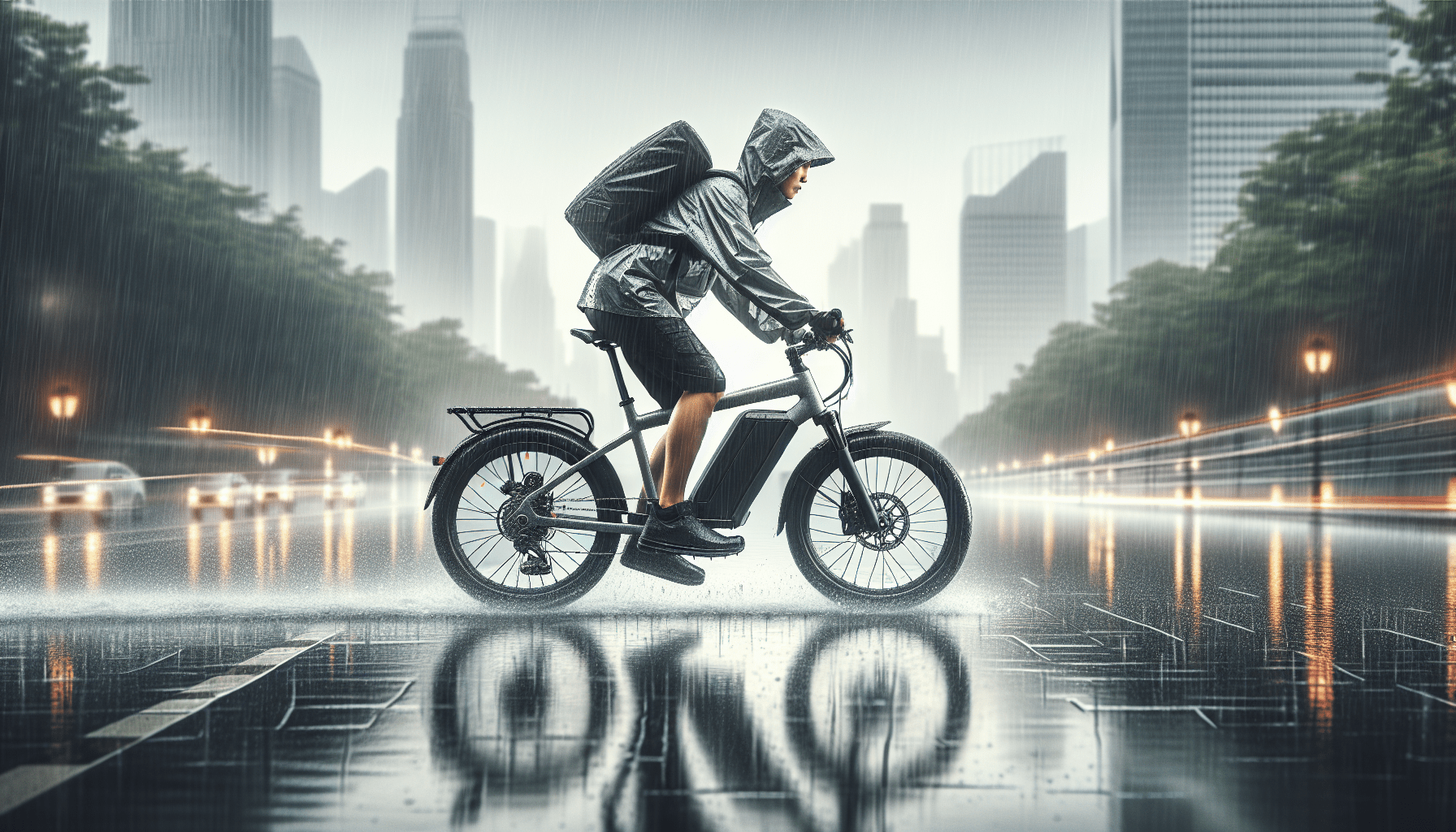Rainy days can make any outdoor activity feel like a soggy mess, and as an avid cyclist, you may be wondering if it’s possible to ride your e-bike in such conditions. The good news is that with a few weatherproofing tips, you can enjoy the thrill of cycling even on wet days. In this article, we will discuss how to protect your e-bike from rain and offer some practical advice to ensure a smooth and enjoyable ride, rain or shine. So grab your raincoat and let’s get ready to tackle the elements!
Choosing a Waterproof E-Bike
When it comes to choosing a waterproof e-bike, one important factor to consider is the IPX rating. IPX ratings determine the level of water resistance an e-bike has. Look for bikes with higher IPX ratings, indicating better protection against water ingress. This means you can ride with peace of mind, even in heavy rain or wet conditions. Additionally, it’s a good idea to consider e-bikes with fenders and mudguards. These accessories can help prevent water from splashing onto you and your e-bike, keeping you dry and your bike protected.
Pre-Ride Preparations
Before venturing out on your e-bike in the rain, there are a few pre-ride preparations to keep in mind. First and foremost, inspect your e-bike to ensure everything is in proper working order. Check for any loose screws or damaged components that may cause problems in wet conditions. It’s also important to check your tire pressure, as maintaining proper tire pressure can greatly improve traction on wet surfaces. Additionally, apply a corrosion protectant on metal parts, such as the frame and handlebars, to prevent rust and deterioration. Finally, ensure that your lights and brakes are working efficiently to enhance safety during your ride.

Protecting Electrical Components
As an e-bike rider, protecting the electrical components of your bike is crucial, especially when riding in the rain. One simple and effective way to do this is by covering exposed connectors with electrical tape. This helps seal them from water, reducing the risk of damage. Another important step is to use a waterproof bag or case for your battery. This will provide an extra layer of protection, ensuring that water does not seep into the battery compartment. Consider using a rain cover for the display unit as well, as this will shield it from water damage. Lastly, applying a silicone spray to the controller can help protect it from moisture and ensure optimal performance.
Keeping Yourself Dry
When riding an e-bike in the rain, it’s essential to keep yourself dry to avoid discomfort and potential health issues. To achieve this, wearing waterproof clothing is key. Invest in a good-quality rain jacket and pants to keep your upper and lower body protected from the rain. Don’t forget to cover your helmet with a waterproof cover to prevent water from dripping down your neck. Waterproof gloves and shoe covers are also essential to keep your hands and feet dry. Additionally, consider wearing cycling-specific rain gear, designed to keep you dry while allowing for breathability. Lastly, protect any electronics you may have, such as your smartphone or GPS, with waterproof bags to ensure they don’t get damaged.
Enhancing Visibility
When riding in rainy or low-light conditions, it’s crucial to enhance your visibility on the road. One way to do this is by wearing reflective clothing or accessories. These items have reflective strips or materials that make you more visible to other road users. Additionally, attaching front and rear lights to your e-bike is essential. These lights not only illuminate your path but also make you more visible to motorists and pedestrians. Consider using clip-on reflectors as well, which can be easily attached to your bike to provide extra visibility. Another tip is to choose bright-colored clothing, as this can significantly improve your visibility in rainy or gloomy weather.
Adjusting Riding Technique
Riding an e-bike in the rain requires some adjustments to your usual riding technique to ensure safety and control. First and foremost, reduce your speed and maintain a safe distance from other vehicles on the road. This allows for better reaction time and prevents accidents. When braking, it’s important to apply the brakes early and gradually to avoid sudden skids or loss of control. Avoid making sudden maneuvers, such as sharp turns or quick accelerations, as wet surfaces can be slippery and lead to accidents. Additionally, be cautious of painted road markings, as they tend to be extra slippery when wet.
Drying and Cleaning After Riding
After riding your e-bike in the rain, it’s essential to properly dry and clean it to prevent any damage or deterioration. Start by wiping down the e-bike with a clean and dry cloth to remove any moisture. Pay extra attention to areas where water may have accumulated, such as the frame, handlebars, and seat. Next, dry the battery and connectors thoroughly using a cloth or towel. It’s important to remove any moisture to prevent corrosion and ensure optimal performance. Clean and lubricate the chain and drivetrain as well, as these components are prone to rust and dirt buildup. Finally, store your e-bike in a dry and well-ventilated area to avoid any lingering moisture or potential damage.
Maintenance Tips for Longevity
To ensure the longevity of your e-bike and maintain its performance, regular maintenance is essential, especially after riding in the rain. Regularly inspect and replace worn-out parts to prevent any failures or breakdowns. Keeping your e-bike clean is crucial in preventing rust and corrosion. Make it a habit to clean your bike thoroughly after every ride, particularly in wet conditions. Applying rust inhibitors or wax to the metal surfaces can provide an extra layer of protection against moisture and rust formation. Finally, store your e-bike properly to avoid water damage. Choose a dry and secure location to store your bike, away from any potential water leaks or wet areas.

Dealing with Heavy Rainfall
While riding an e-bike in light rain may be manageable with the proper precautions, heavy rainfall can pose additional challenges. In such conditions, it’s important to take extra measures to protect yourself and your e-bike. Consider using a waterproof backpack or panniers to keep your belongings dry during the ride. These accessories provide an additional layer of protection, ensuring that your items don’t get soaked. Using a rain cover for the entire bike can also be helpful in preventing water from seeping into various components. Take breaks during heavy rainfall to dry off and warm up to avoid discomfort or potential health issues. Lastly, it’s best to avoid deep puddles or flooded areas, as they can be hazardous and increase the risk of damage to your e-bike.
Seeking Professional Help
When it comes to weatherproofing your e-bike, seeking professional help can be beneficial, especially if you’re unsure about specific modifications or products. Consult an e-bike specialist or a local bike shop that specializes in e-bikes for expert advice on weatherproofing your bike. They can guide you on the best practices and recommend suitable products for your specific e-bike model. Additionally, getting your bike serviced regularly ensures that it remains in optimal condition and helps address any potential weather-related issues. If you’re not confident in your ability to install protective covers properly, consider professional installation to ensure maximum effectiveness and protection.
By following these weatherproofing tips, you can confidently ride your e-bike in the rain, knowing that both you and your bike are well-protected. With the right preparation and precautions, rainy weather won’t dampen your e-biking experience. So gear up, stay dry, and enjoy your ride!

